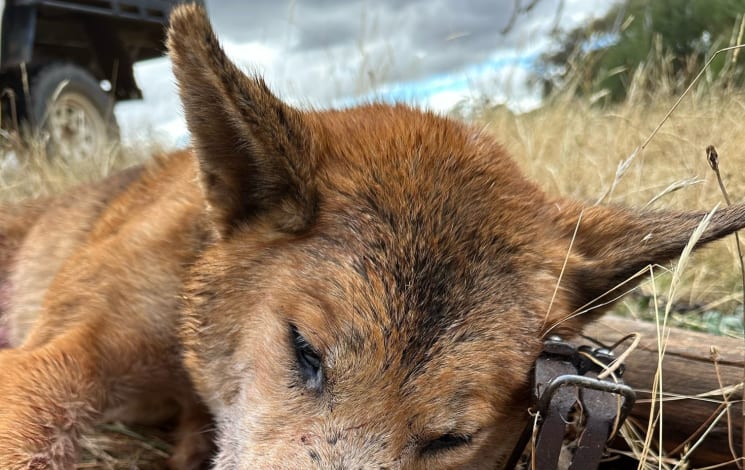NORTH East landholders have put their case why the State Government should extend an order ending September 30, to allow wilds dog to be trapped, shot or baited on crown land, with 3kms of private property, as part of wild dog control measures in Victoria.
Around 50 landholders attended a session in Mansfield, with another 100 at a session in Tallangatta last week, which were among five regional sessions held by the Department of Energy, Environment and Climate Action (DEECA) and Agriculture Victoria, to garner feedback as part the review into wild dog management in the state.
Some 85 people attended a session in Omeo, 45 were present at Gelantipy, and 40 people attended a session in Hopetoun in the north-west, where the unprotection order has been lifted since March; while around 90 people attended an online session.
Concerns raised by farmers during the sessions related to predation of livestock and the limited effectiveness of non-lethal control methods, along with detailing both the emotional and economic impact of wild dog attacks.
Attendees expressed overall support for the continuation of the wild dog management plan, worried about the future of livestock production if wild dog control measures are rolled back.
Latest Stories
They also registered strong interest in new scientific research pertaining to the nomenclature of dingoes as well as data on dingo population numbers.
Evidence now suggest a significant proportion of wild dogs are in fact pure dingoes - not hybrids as previously believed.
However, this remains a contentious issue amongst some industry stakeholders who have queried the research and sample size.
Recent feedback adds to an online survey in July by Agriculture Victoria, which saw over 500 Victorian livestock producers respond, and over half reporting incidents of livestock being either maimed or killed by a wild dog and dingo in the past five years.
Similar concerns to the in-person sessions were also raised in the survey with landholders providing valuable information about the levels and frequency of livestock attacks, with predation an ongoing concern for sheep farmers whose properties bordered public land.
Survey results also provided valuable insights into control methods currently being used to manage predation, with 84 per cent of respondents employing a combination of both lethal and non-lethal methods ranging from trapping and 1080 ground baiting to guardian animals and exclusion fencing.
The government is also consulting with Traditional Owners, environmental scientists and conservation groups.
A government spokesperson said the Minister for Environment and Minister for Agriculture will jointly consider all findings and feedback to inform future dingo management "to most appropriately balance the protection of livestock and the livelihood of farming communities with the conservation of dingoes".
ALOT AT STAKE FOR PRODUCERS, SAYS CHAIRMAN
GEOFF Power, chair of the National Wild Dog Action Plan, said with the dingo unprotection order due to expire statewide on October 1, producers and industry bodies are naturally worried - exacerbated by the government’s failure to confirm whether the Wild Dog Control Program will also be renewed after its current term ends on the same date.
He said wild dog attacks have a significant economic and emotional impact on producers, and without these measures, the state’s $4.5 billion sheep and wool industry will potentially be at risk.
“We hope feedback from these sessions, and findings from the Victorian Government’s livestock predation survey, are taken into consideration when deciding on the future policy settings for wild dog control beyond 1 October,”Mr Power said.
“For industry, it’s not about eradication of dingoes, it’s about control.
“The current dingo unprotection order does this, providing a balance between wild dog control and dingo conservation.
“Without it, we are likely to see significant spread of wild dogs, with serious consequences for livestock production and biodiversity.”















